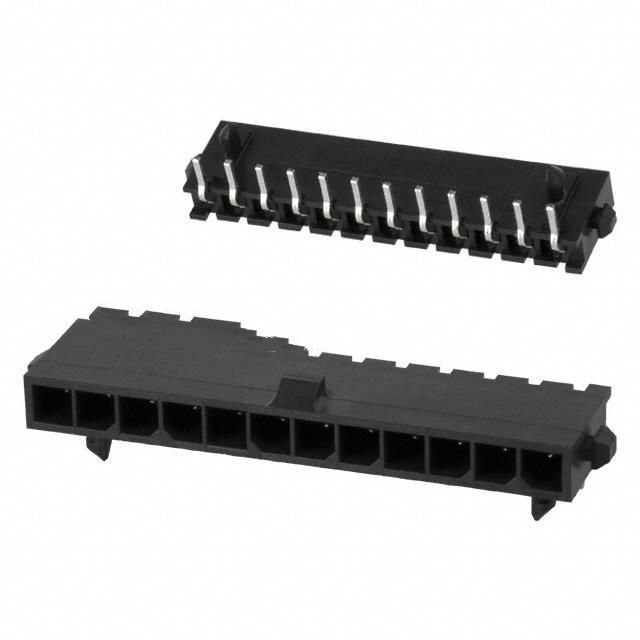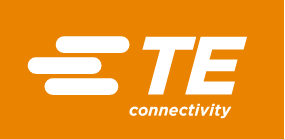1445055-8 Product Introduction:
TE Connectivity AMP Connectors Part Number 1445055-8(Rectangular Connectors - Headers, Male Pins), developed and manufactured by TE Connectivity AMP Connectors, distributed globally by Jinftry. We distribute various electronic components from world-renowned brands and provide one-stop services, making us a trusted global electronic component distributor.
1445055-8 is one of the part numbers distributed by Jinftry, and you can learn about its specifications/configurations, package/case, Datasheet, and other information here. Electronic components are affected by supply and demand, and prices fluctuate frequently. If you have a demand, please do not hesitate to send us an RFQ or email us immediately sales@jinftry.com Please inquire about the real-time unit price, Data Code, Lead time, payment terms, and any other information you would like to know. We will do our best to provide you with a quotation and reply as soon as possible.
Rectangular Connectors - Headers, Male Pins are key components that enable signal or power connections between circuits. It consists of an insulated base and multiple metal pins arranged in a rectangular array, which are fixed to the base by crimping, welding, or threading. The needle holder serves as the female end, while the male pin serves as the corresponding male end, and the two are electrically connected through precise coordination. In terms of design principles, rectangular connectors emphasize the characteristics of high density, high reliability, and easy insertion and removal, and are widely used in situations that require stable and efficient signal transmission. Its characteristics include low contact resistance, high withstand voltage, wear resistance, and resistance to electromagnetic interference.
Application
Rectangular Connectors - Headers, Male Pins are widely used in various electronic devices, especially in computer hardware, communication equipment, industrial automation control and other fields. In the field of computer hardware, they are used to connect core components such as motherboards, graphics cards, and memory modules, ensuring high-speed data transmission and stable system operation. In communication equipment, rectangular connectors are used to connect circuit boards, modules, antennas, etc., supporting high-speed signal transmission and complex circuit layouts. In industrial automation control systems, rectangular connectors serve as a bridge between sensors, actuators, and controllers to achieve precise control and data feedback.
FAQ about Rectangular Connectors - Headers, Male Pins
-
1. What is the role of the male plug of the rectangular connector?
The male plug of the rectangular connector is mainly used to transmit signals and energy, and is an indispensable part of electrical equipment. The design and application of the rectangular connector are based on its unique structure and function, making it widely used in industrial control systems, instrumentation, communication equipment, and aerospace. The principle of the rectangular connector is to use the metal contact between the plug and the socket to achieve electrical connection. There are neatly arranged metal terminals in the socket, and there are a corresponding number of pins on the plug corresponding to them. When the socket and the plug are properly docked, the pins can be connected to the terminals to form a path, thereby realizing the transmission of electrical signals and power. The rectangular connector also has the characteristics of waterproof, dustproof, shockproof, and fireproof, which can adapt to various harsh environments and ensure the stable operation of the equipment. Due to its high reliability and durability, rectangular connectors are also widely used in automobiles, rail transit, medical equipment and other fields, becoming an ideal choice for connecting electrical equipment.
-
2. Common packaging methods for rectangular connectors
1. Panel-mounted packaging
Panel-mounted packaging is the most common form of rectangular connector, which allows the connector to be directly fixed to the housing or panel of the device. This packaging method is usually achieved by screw locking, snap-on fixing or crimping to ensure a stable connection between the connector and the panel. The advantages of panel-mounted packaging are that it is easy and quick to install, easy to maintain and replace, and can provide good mechanical strength and protection level. It is suitable for scenarios that require frequent plugging and unplugging or high protection requirements, such as industrial control equipment, communication equipment, medical equipment, etc.
2. Printed board mounted packaging
Printed board mounted packaging is another widely used rectangular connector packaging method. It directly solders the connector on the PCB (printed circuit board) and realizes electrical connection through pins or pads. This packaging method has the advantages of small size, light weight, flexible layout, etc., which can save space to the maximum extent and improve the integration of circuit boards. It is widely used in computers, consumer electronics, automotive electronics and other fields, especially in occasions with extremely high space requirements, such as mobile phones, tablets and other portable devices.
3. Needle seat and socket combined packaging
The needle seat and socket combined packaging is a packaging form in which the two parts of the connector (needle seat and socket) are designed separately, and then the electrical connection is realized by plugging. This packaging method has the characteristics of easy plugging and unplugging, easy replacement and upgrading, and is particularly suitable for scenarios where modules need to be frequently replaced or systems need to be upgraded. For example, in the fields of test equipment, modular data centers, etc., the combined package of pin header and socket can significantly improve the flexibility and maintainability of the system.
4. Mixed package
With the continuous development of electronic technology, a single packaging method has been difficult to meet the complex and changing application requirements. Therefore, mixed package came into being, which combines multiple packaging methods to form a comprehensive solution. For example, combining panel mounting with printed circuit board mounting not only ensures the stability of the connector, but also improves the integration of the circuit board; or combining the combination of pin header and socket with modular design to achieve a more flexible and changeable system configuration.
The design of mixed package needs to comprehensively consider various factors, including spatial layout, electrical performance, mechanical strength, cost-effectiveness, etc., to seek the best design solution. At the same time, it is also necessary to pay attention to the compatibility and interoperability between different packaging methods to ensure the overall performance and stability of the system.
5. Special environment adaptability package
In some special environments, such as high temperature, low temperature, high humidity, strong electromagnetic interference, etc., higher requirements are put forward for the packaging method of rectangular connectors. To this end, a variety of special environmental adaptability packages have been developed, such as high temperature resistant packages, waterproof packages, and anti-electromagnetic interference packages. These packaging methods improve the environmental adaptability of connectors by using special materials and optimizing structural design, ensuring that they can still work stably and reliably in harsh environments.
-
3. How to install rectangular connectors
Assembly steps of rectangular connectors
1. Preparation: Prepare rectangular connectors, screwdrivers, screws, electric drills, mounting plates, and rulers.
2. Determine the position: Measure the position of the rectangular connector on the mounting plate with a ruler and mark this position.
3. Drill holes: Use an electric drill to drill holes on the mounting plate that match the rectangular connector.
4. Fix the connector: Place the rectangular connector into the drilled hole and fix it with screws.
5. Connect the wires: Insert the wires into the gap of the rectangular connector, make sure the wires are inserted in place, and then fix the screws with a screwdriver to ensure that the wires are firmly connected.
6. Complete the connection: Insert the wire at the other end into another rectangular connector and lock it.
 Lead free / RoHS Compliant
Lead free / RoHS Compliant



























